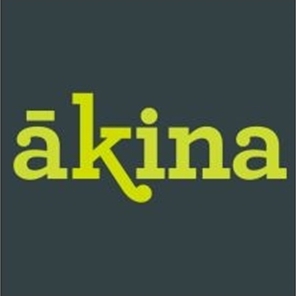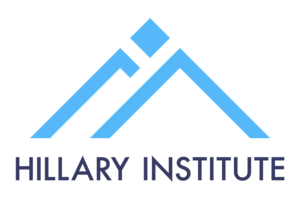Flooding From Underneath: New Tool Reveals Shallow Groundwater Elevations
A new online tool that identifies areas at risk from groundwater flooding has been developed by New Zealand scientists. Groundwater flooding occurs when the water table rises close to the surface, causing issues even before the water visibly floods the ground.

The Shallow Groundwater Screening Tool, which identifies areas at threat from water table rises, will help hazard and land-use decision-makers understand the scale of the problem and which areas are likely to be the most vulnerable, says lead for the Future Coasts Aotearoa programme, NIWA Chief Scientist Coasts and Estuaries Dr Scott Stephens.
Groundwater - also known as the water table - rises with sea levels, particularly in coastal and low-lying areas, and it can be pushed even higher by persistent rainfall. Groundwater flooding is often overlooked as a threat, however it is a hazard that traditional flood defences such as stopbanks and seawalls cannot contain because the water comes up from underneath. When the groundwater rises, it can saturate soil and structures, weaken infrastructure, increase liquefaction risk and worsen surface flooding from heavy rainfall. As sea levels continue to rise, groundwater levels in the coast zone and close to tidal rivers will increase accordingly. Persistent heavy rain also pushes up the water table, a phenomenon which contributed to South Dunedin’s flooding in October 2024.
It's not all bad - shallow groundwater can also be beneficial for some ecosystems and for buffering droughts.
The first-of-its-kind online tool, developed as part of the NIWA-led Future Coasts Aotearoa research programme, shows areas that could be exposed to shallow groundwater hazards, right now, based on existing groundwater measurements, says Dr Stephens.
"Increased flooding events will be a real driver of change in many places. Rising groundwater will destabilise roads and damage buildings. It could make farming uneconomic. Stormwater pipes will be persistently full. Councils and decision-makers need an accurate picture of current shallow groundwater levels to prepare for future risks by identifying what areas could be exposed to shallow groundwater as sea levels continue to rise. This tool will be useful for local, district and regional councils, engineers, infrastructure providers, and rural communities, as well as individual citizens who want to make better-informed decisions for their future."
Water resource consultancy Kōmanawa Solutions created the tool. Its founder Zeb Etheridge says that we are interested in the shallow water table because that's the part of the groundwater system that's most affected by sea level rise.
"Two-thirds of New Zealanders live in coastal areas, meaning much of our infrastructure and land use falls within these vulnerable zones. Understanding this issue is critical for future planning."
The Kōmanawa Solutions team pulled together 2.4 million real-life readings of groundwater depth from around the country. To fill in the gaps, they used machine learning trained on factors that influence the water table, such as land elevation, soil type and nearness to waterways. Mr Etheridge describes the result as a risk screening tool to manage hazards, guide adaptation planning for existing land use choices, and plan future developments.
"Local authorities are likely to undertake more detailed assessments of the areas that are shown to be potentially exposed before making any significant decisions," he says. The tool is designed so that the certainty of detecting risky groundwater levels can be dialled up or down, as can the depth of groundwater that is of interest.
Further updates from the research team, which includes NIWA, Kōmanawa Solutions, GNS Science, and the University of Canterbury, are in development. These include projections of rising water tables as sea levels rise and land subsidence. The team will also investigate the risk of groundwater becoming saline as seawater infiltrates it.
The tool can be found at www.niwa.co.nz/shallow-groundwater-tool
FAQs
What does the Shallow Groundwater Screening Tool do?
The tool shows areas that could be exposed to shallow groundwater, right now, based on existing groundwater measurements. The dataset covers the areas of New Zealand where the elevation is less than 100 m above sea level.
The model results tell us the likelihood of finding shallow groundwater in every 100 x 100 m area below 100 m above sea level and allows users to select a set of model results which suit their particular purpose.
What is the decision-support gap that this first-of-its-kind tool fills?
This tool shows us where shallow groundwater is likely to be present, or not likely to be present. We can confirm whether shallow groundwater is present or not present at a given location, either by looking at data from existing local bores or by excavating a trial pit or hand auguring and monitoring where no previous information is available. But the depth to groundwater can vary significantly over relatively short distances and hence we cannot identify areas with potential shallow groundwater at scale without either extensive and costly investigations, or modelling.
Who should be using the tool?
The outputs can be used by councils, rural communities, engineers and infrastructure providers as a risk screening tool, to understand which areas could be exposed to shallow groundwater and require more detailed local investigation and assessment, and which areas are unlikely to be exposed.
The outputs also provide information on how certain we can be that shallow groundwater is present or not present, which can be used for hazard management and development planning. In most instances, we would expect users of the information to undertake more detailed assessments of the areas that are shown to be potentially exposed before making any significant decisions.
How can I access the tool?
The tool can be found at www.niwa.co.nz/shallow-groundwater-tool. The spatial layers used in the tool can also be found here.
This is a publicly available tool that anyone can use. There is a modest charge for the tool’s use that will be reinvested in related science, which could include updates to the tool.
What is the data and process that underpins the tool?
We know from both theory and practical experience that depth to groundwater varies with land elevation, proximity to rivers, streams, and the coastline, soil properties, and other environmental variables. The tool uses a machine learning technique to determine which combinations of environmental variables provide the best predictions of depth to groundwater.
The machine learning model, which uses a method called Random Forest via a novel implementation developed for this study, was trained using all groundwater readings from 79,000 locations (where the well depth or screen is less than 30 m below ground level) with data available, and national datasets of environmental variables like soil properties to provide the best possible prediction of whether shallow groundwater is likely or unlikely to be present on a 100 x 100 m grid for all land below 100 m elevation.
The model developed to create this product was trained using all accessible groundwater depth information held in Regional Council and Territorial Authority databases and in the New Zealand Geotechnical Database. This comprised readings from approximately 110,000 locations around the country.
What is the overarching research programme that is supporting the development of the tool?
The tool and associated research is part of the Future Coasts Aotearoa programme that aims to transform coastal lowland systems threatened by relative sea-level rise into prosperous communities. It’s an Endeavour programme funded from 2021-2026 by the Ministry for Business, Innovation and Employment, and is a collaborative effort that includes Kōmanawa Solutions and is led by NIWA.
What other groundwater research is underway within the programme?
Having identified the areas in our costal lowlands with shallow groundwater, a key next step is to quantify the assets such as buildings, roads and farmland which are located in shallow groundwater zones. By combining this information with soon to be completed research on the impact of rising water tables on farmland productivity and modelling of water table rise the Future Coasts Aotearoa research programme will provide insights into the scale of the challenges we will face with rising water tables and provide information to support proactive adaptation decisions.


 2Degrees: Stop The Pings - Half Of Kiwis Overwhelmed By Notifications
2Degrees: Stop The Pings - Half Of Kiwis Overwhelmed By Notifications Electricity Networks Association: How Many More Trees Need To Fall On Power Lines Before The Rules Change?
Electricity Networks Association: How Many More Trees Need To Fall On Power Lines Before The Rules Change? Parrot Analytics: Netflix Earnings - Price Hikes With Minimal Churn | Will Netflix Be A Bright Spot For Markets?
Parrot Analytics: Netflix Earnings - Price Hikes With Minimal Churn | Will Netflix Be A Bright Spot For Markets? Canterbury Museum: Mystery Molars Lead To Discovery Of Giant Crayfish In Ancient Aotearoa New Zealand
Canterbury Museum: Mystery Molars Lead To Discovery Of Giant Crayfish In Ancient Aotearoa New Zealand Ngā Pae o te Māramatanga: Māori Concerns About Misuse Of Facial Recognition Technology Highlighted In Science
Ngā Pae o te Māramatanga: Māori Concerns About Misuse Of Facial Recognition Technology Highlighted In Science Retail NZ: Retailers Call For Flexibility On Easter Trading Hours
Retail NZ: Retailers Call For Flexibility On Easter Trading Hours



